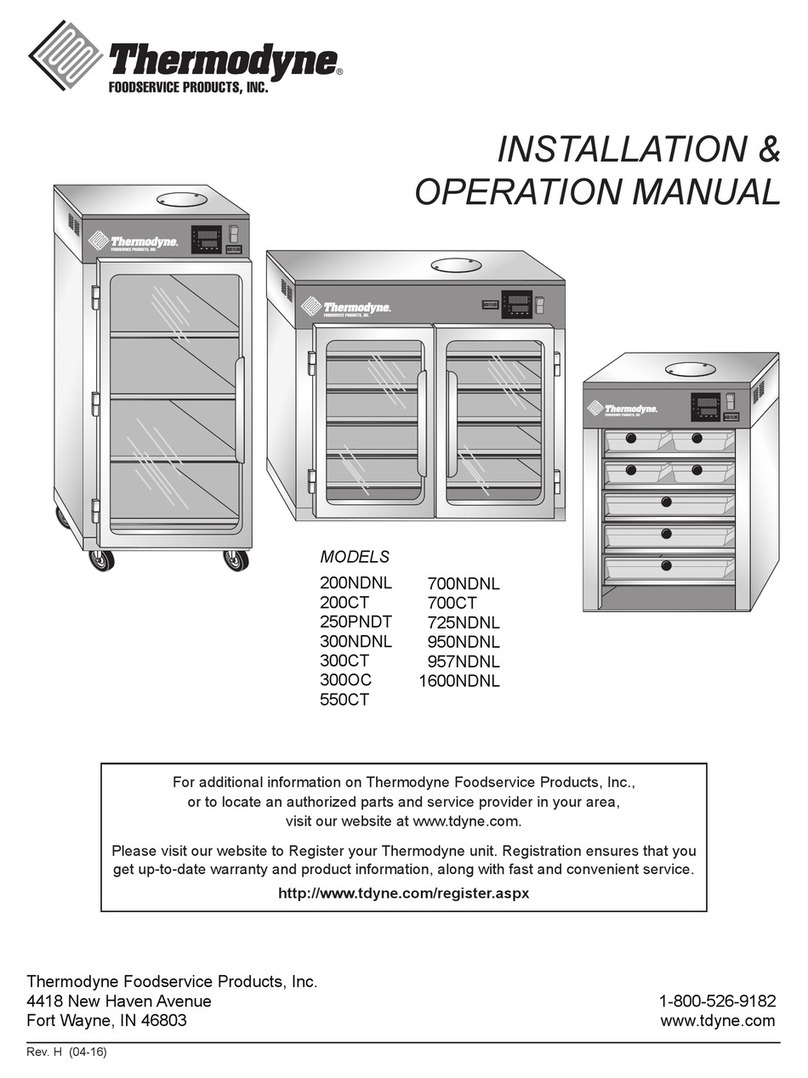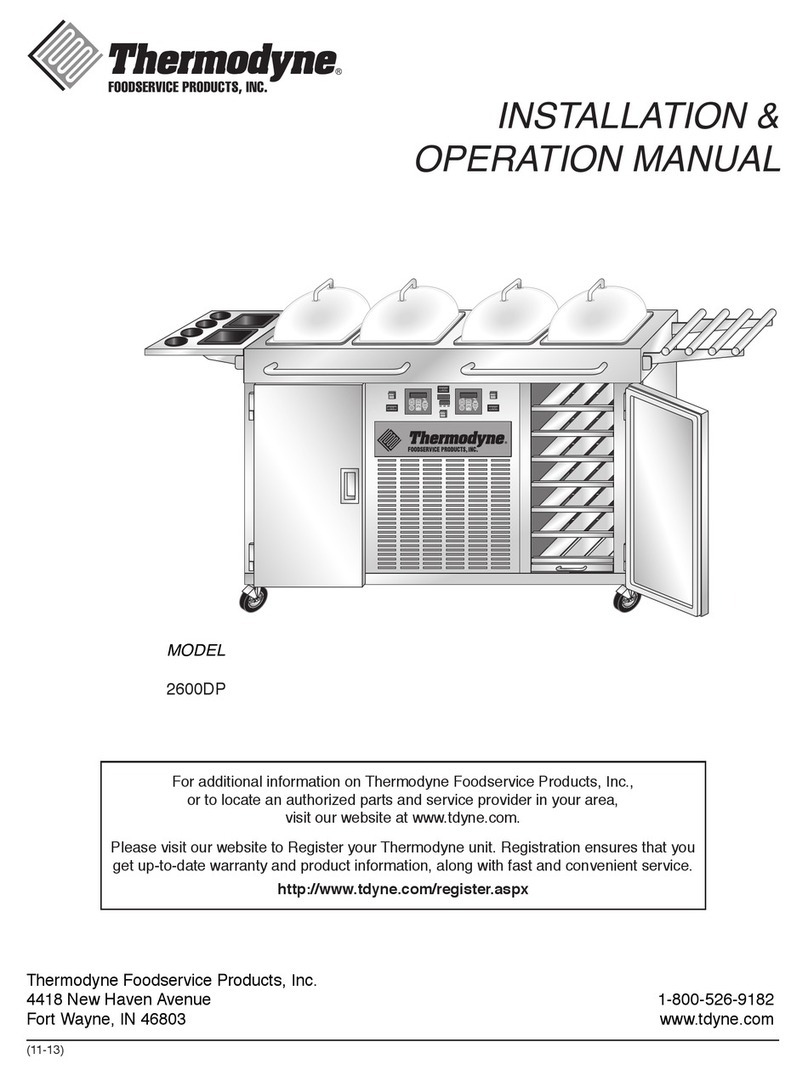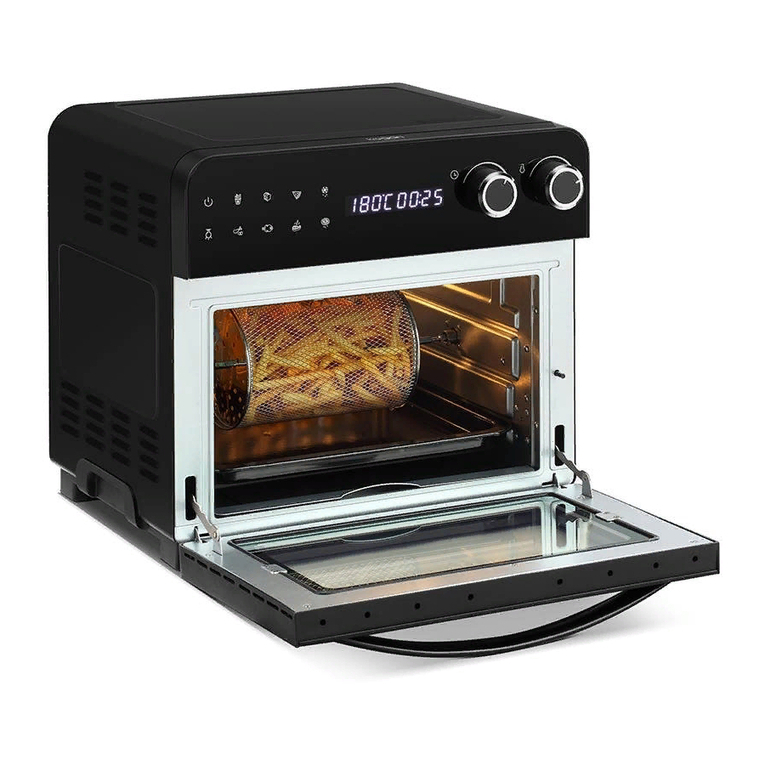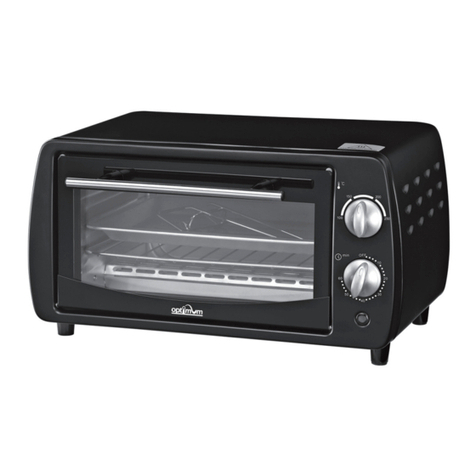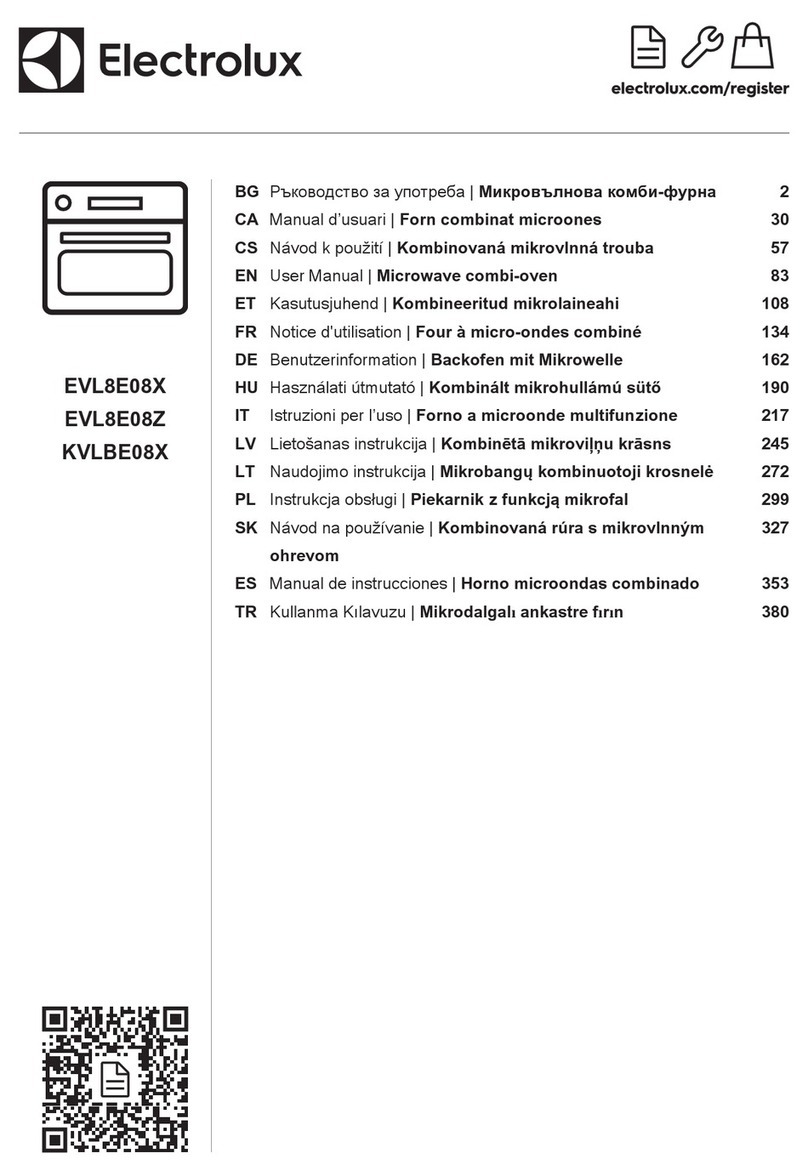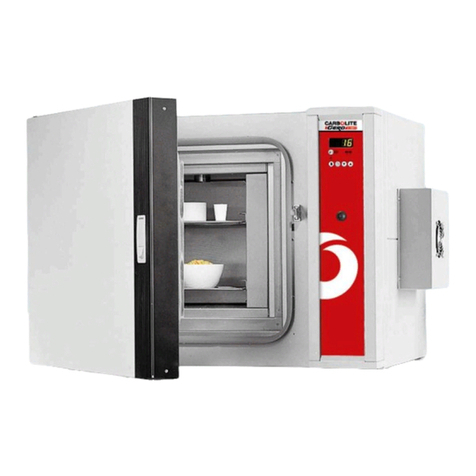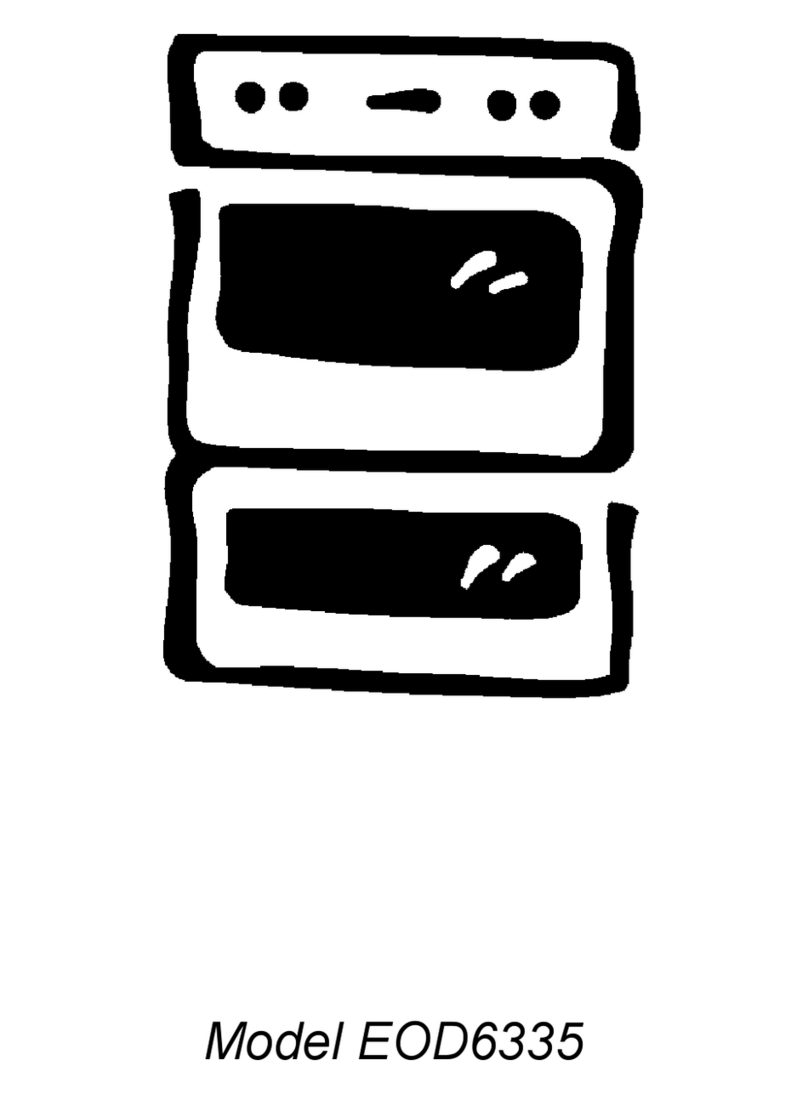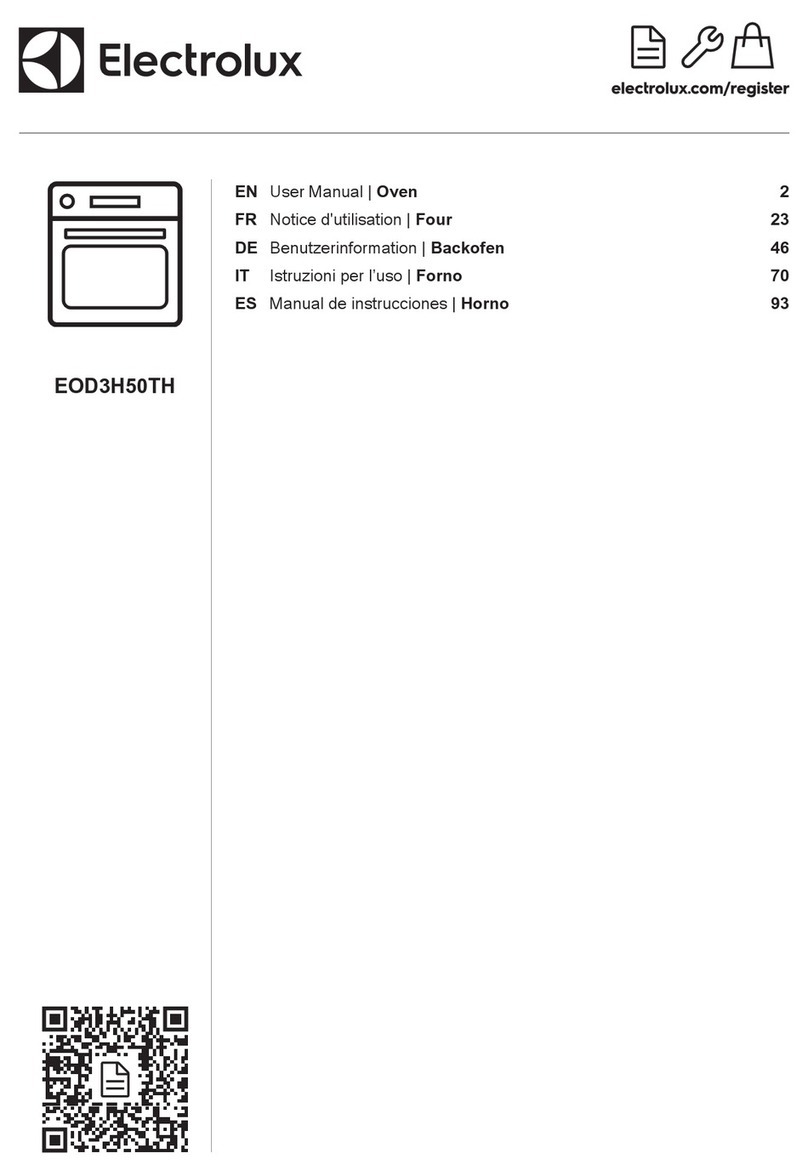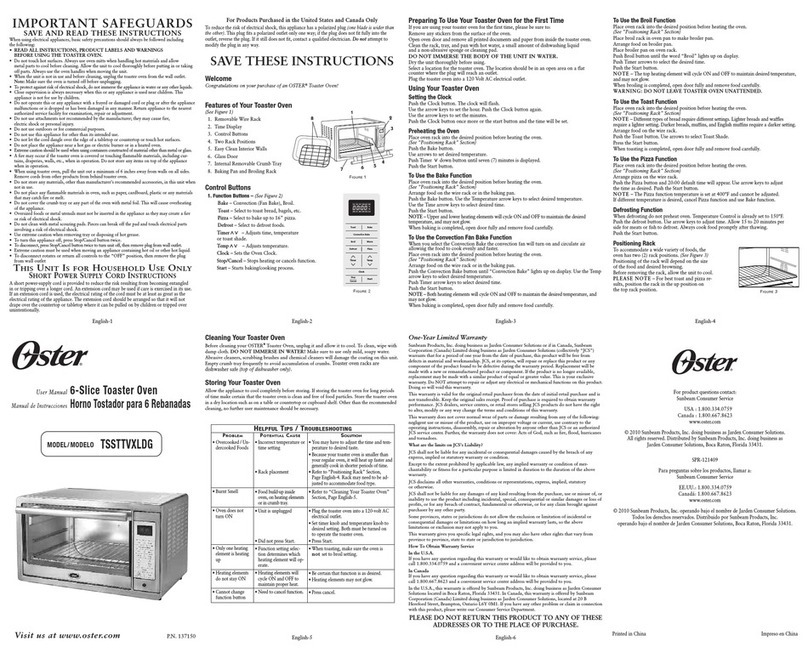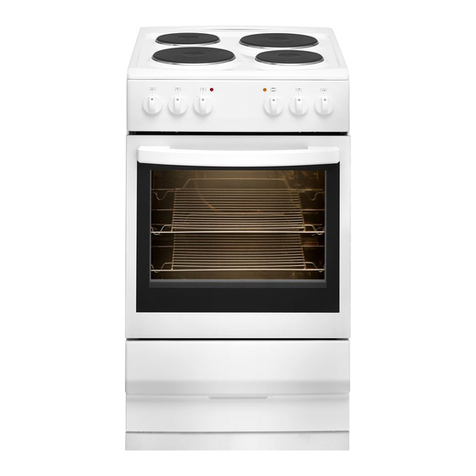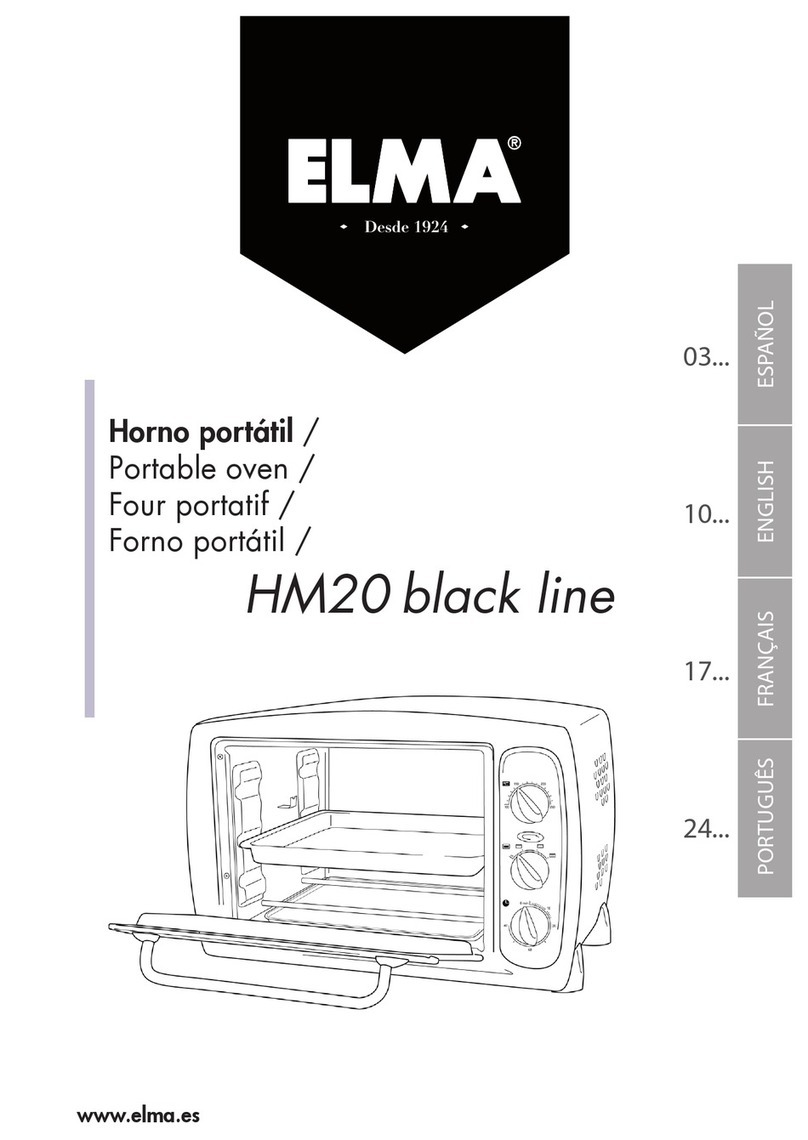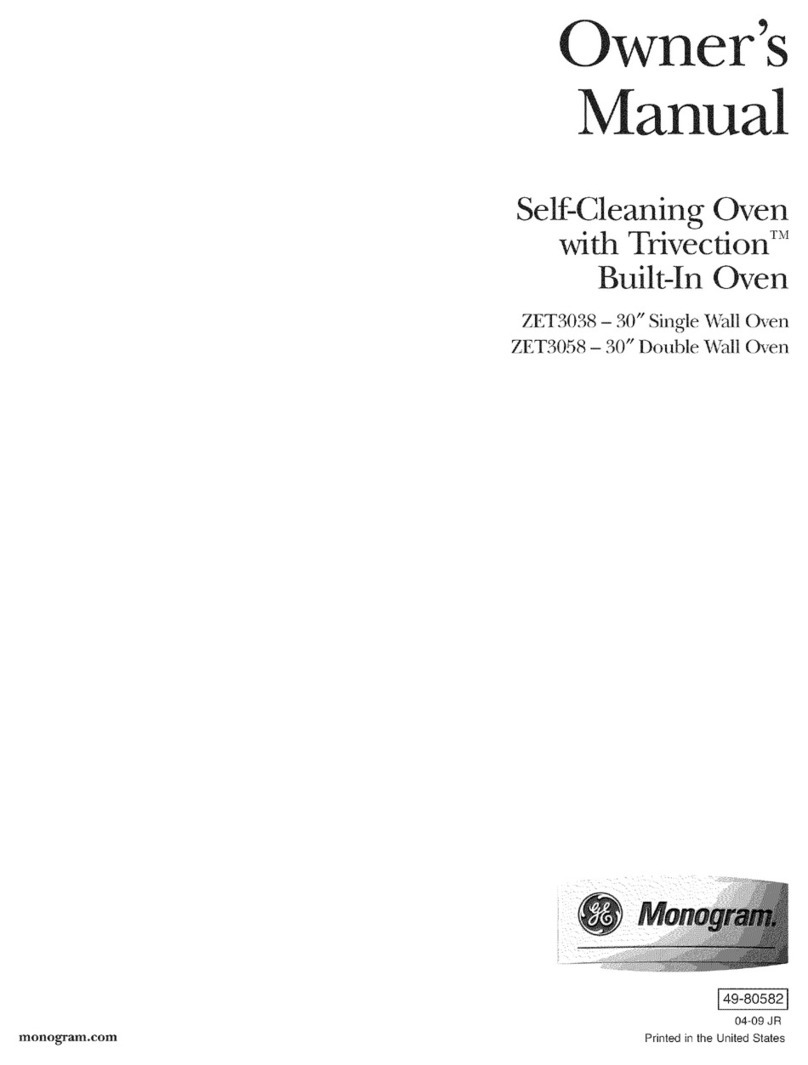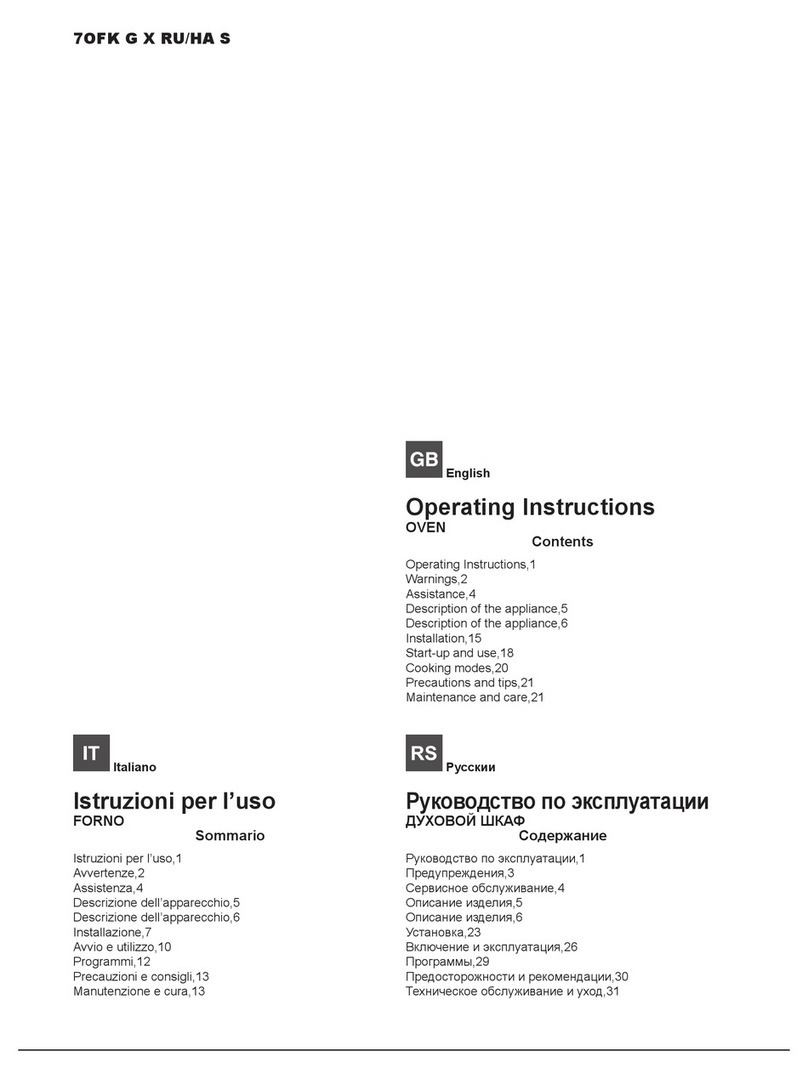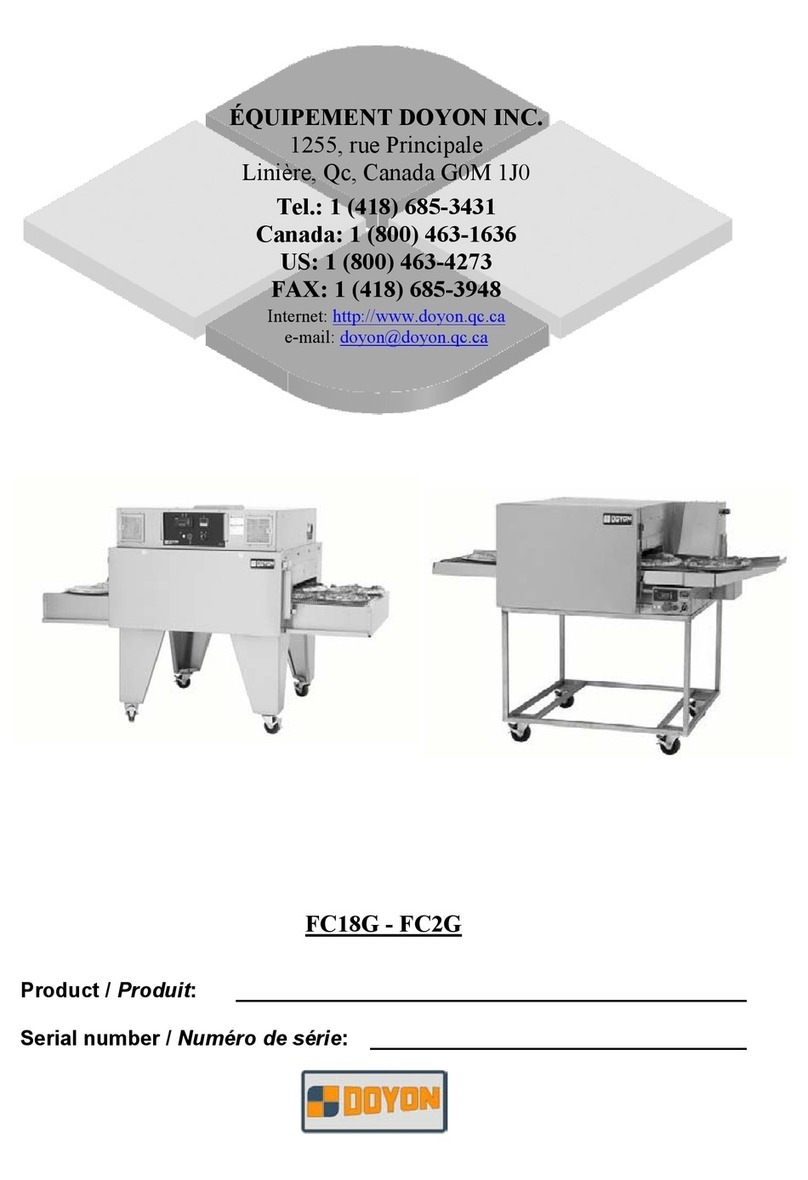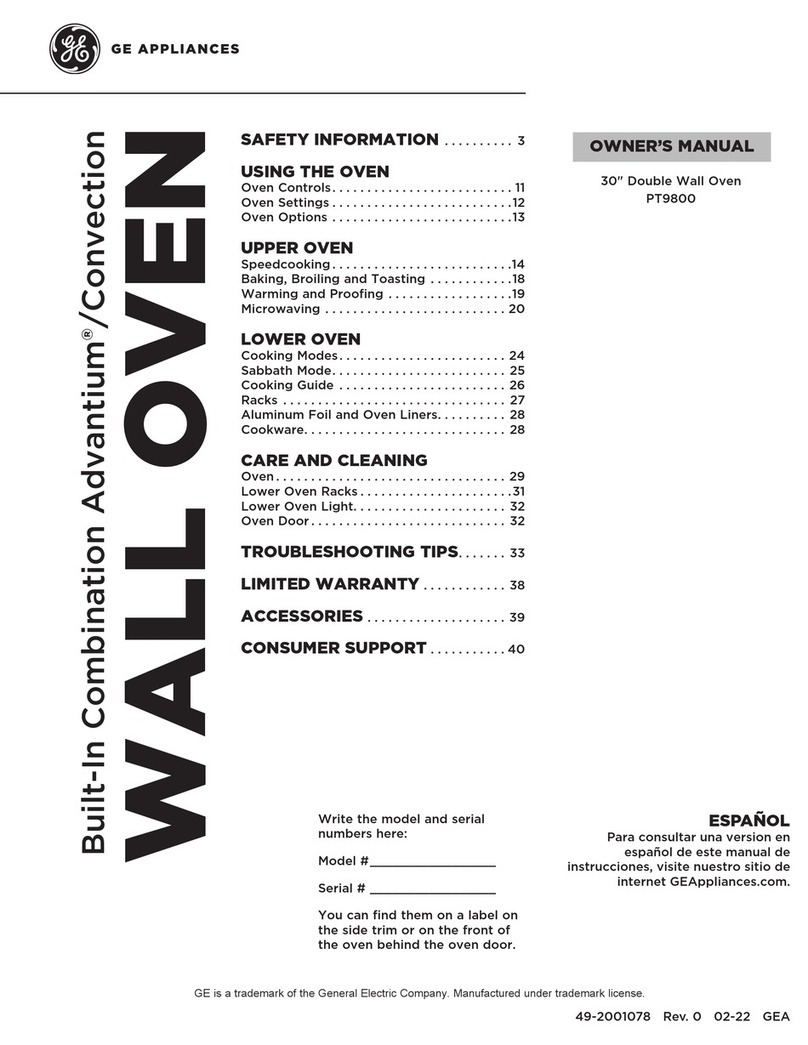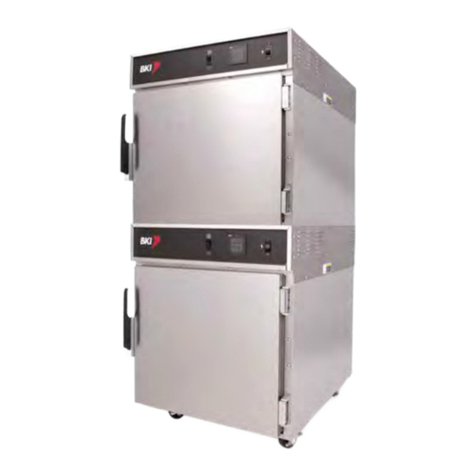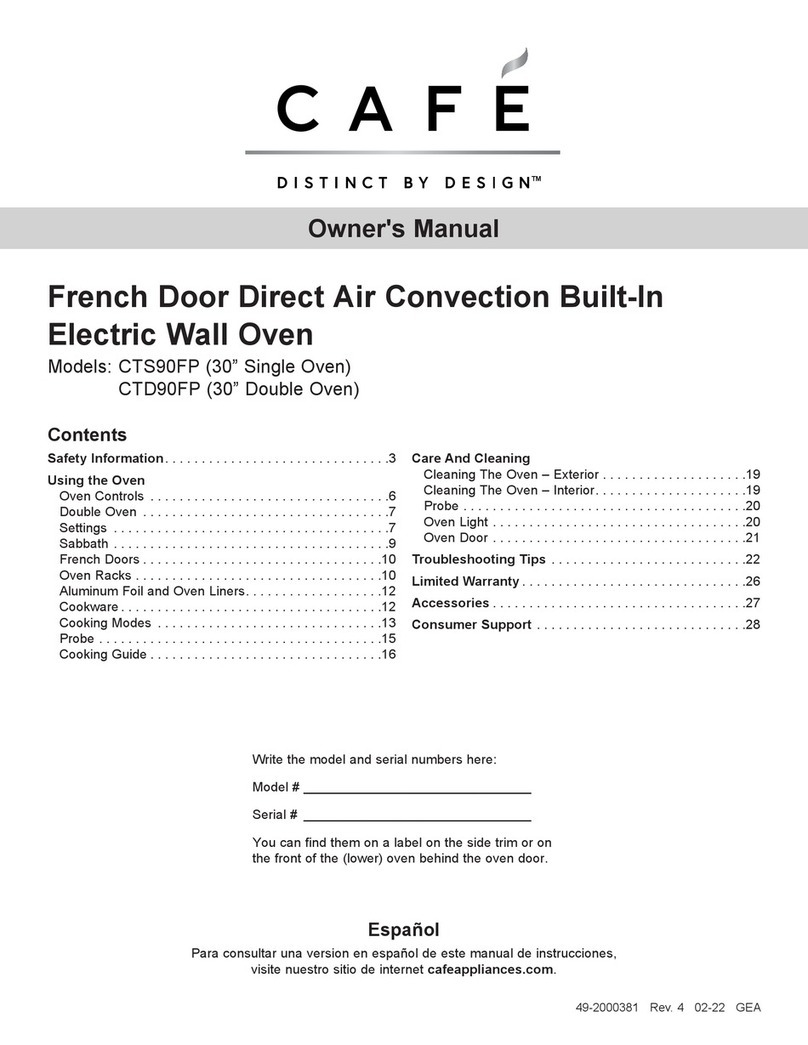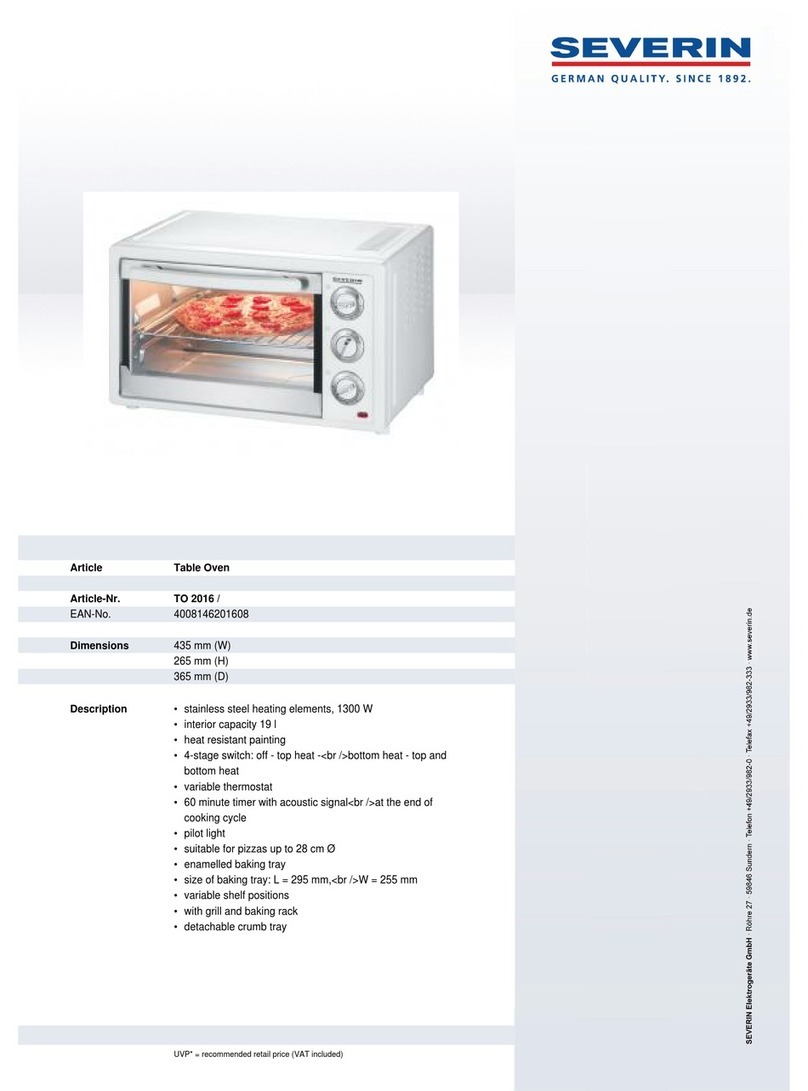THERMODYNE 200NDNL User manual

INTERNATIONAL
SERVICE MANUAL
(04-14)
MODELS
200NDNL
200CT
250PNDT
Thermodyne Foodservice Products, Inc.
4418 New Haven Avenue 1-800-526-9182
Fort Wayne, IN 46803 www.tdyne.com
300NDNL
300CT
300OC
700NDNL
700CT
725NDNL
950NDNL
957NDNL
ADD FLUID
ADD FLUID
Out1
Out2
Out1
Out2
1600NDNL
BWSNDNL

— 2 —
ELECTRICAL WARNINGS
THIS MANUAL HAS BEEN PREPARED FOR PERSONNEL QUALIFIED TO INSTALL ELECTRICAL
EQUIPMENT, WHO SHOULD PERFORM THE INITIAL FIELD STARTUP AND ADJUSTMENTS OF
THE EQUIPMENT COVERED BY THIS MANUAL.
READ THIS MANUAL THOROUGHLY BEFORE OPERATING, INSTALLING OR PERFORMING
MAINTENANCE ON THE EQUIPMENT.
WARNING: Failure to follow all the instructions in this manual can cause property
damage, injury or death.
WARNING: Improper installation, adjustment, alteration, service or maintenance can
cause property damage, injury or death.
WARNING: Electrical connections should be performed only by a certied professional.
WARNING: Electrical and grounding connections must comply with the applicable
portions of the National Electric Code and/or all local electric codes. Failure to comply with this
procedure can cause property damage, injury or death.
WARNING: Before connecting the unit to the electrical supply, verify that the electrical
and grounding connections comply with the applicable portions of the National Electric Code
and/or other local electrical codes. Failure to comply with this procedure can cause property
damage, injury or death.
WARNING: Before connecting the unit to the electrical supply, verify that the electrical
connection agrees with the specications on the data plate. Failure to comply with this
procedure can cause property damage, injury or death.
WARNING: UL73 grounding instructions: This appliance must be connected to a
grounded, metal, permanent wiring system. Or an equipment-grounding conductor must be run
with the circuit conductors and connected to the equipment-grounding terminal or lead on the
appliance. Failure to comply with this procedure can cause property damage, injury or death.
WARNING: Appliances equipped with a exible electric supply cord, are provided with
a three-prong grounding plug. It is imperative that this plug be connected into a properly
grounded three-prong receptacle. Failure to comply with this procedure can cause property
damage, injury or death.
WARNING: If the receptacle is not the proper grounding type, contact an electrician. Do
not remove the grounding prong from the plug. Failure to comply with this procedure can cause
property damage, injury or death.

— 3 —
WARNING: Before performing any service that involves electrical connection or
disconnection and/or exposure to electrical components, always perform the Electrical
LOCKOUT/TAGOUT Procedure. Disconnect all circuits. Failure to comply with this procedure
can cause property damage, injury or death.
WARNING: Before removing any sheet metal panels, always perform the Electrical
LOCKOUT/TAGOUT Procedure. Be sure all circuits are disconnected. Failure to comply with this
procedure can cause property damage, injury or death.
WARNING: Do not operate this equipment without properly placing and securing all
covers and access panels. Failure to comply with this procedure can cause property damage,
injury or death.
WARNING: Do not use or store gasoline or other ammable vapors or liquids in the
vicinity of this or any other appliance. Failure to comply can cause property damage, injury or
death.
WARNING: In the event of a power failure, do not attempt to operate this appliance.
Failure to comply can cause property damage, injury or death.

— 4 —
TABLE OF CONTENTS
ELECTRICAL WARNINGS............................................................................................................................... 2
ELECTRICAL LOCKOUT/TAGOUT PROCEDURE ......................................................................................... 5
FLUID CAPACITIES (STANDARD SHELF CONFIGURATION)....................................................................... 5
COVERS AND PANELS ................................................................................................................................... 6
Top Fill Cover ............................................................................................................................................. 6
Power Head Lid ......................................................................................................................................... 6
Units with Doors......................................................................................................................................... 6
COMPONENT LOCATOR ................................................................................................................................ 7
Power Head Components.......................................................................................................................... 7
Delivery Manifold Components .................................................................................................................. 8
Return Manifold Components .................................................................................................................... 9
COMPONENT REMOVAL AND REPLACEMENT.......................................................................................... 10
Electrical Components ............................................................................................................................. 10
Power Toggle Switch................................................................................................................................ 10
Add Fluid Light ..........................................................................................................................................11
Temperature Controller .............................................................................................................................11
Cooling Fan.............................................................................................................................................. 12
Power Cord .............................................................................................................................................. 13
POWER BOARD COMPONENTS ................................................................................................................. 13
Solid State Relay ..................................................................................................................................... 13
230VAC Float Board ................................................................................................................................ 14
300NDNL TWELVE BUTTON TIMER............................................................................................................. 15
PLUMBING COMPONENTS.......................................................................................................................... 16
B&G Pump ............................................................................................................................................... 16
TeonHoses ............................................................................................................................................ 17
Fluid Level Probes ................................................................................................................................... 18
Snap Disc................................................................................................................................................. 20
Thermocouple .......................................................................................................................................... 20
Heat Elements ......................................................................................................................................... 22
MAINTENANCE PROCEDURES................................................................................................................... 24
Temperature Controller Set Up Procedures............................................................................................. 24
Keypad Operation .................................................................................................................................... 24
Unlock the Controller ............................................................................................................................... 24
Set-Up...................................................................................................................................................... 24
To Toggle Between °F and °C Readout: .................................................................................................. 25
Changing the Heat Transfer Fluid ............................................................................................................ 25
CT Door Adjustment................................................................................................................................. 25
Stainless Steel Care ................................................................................................................................ 26
TROUBLESHOOTING ................................................................................................................................... 27
WIRING SCHEMATIC .................................................................................................................................... 28
HEAT TRANSFER FLUID MSDS ................................................................................................................... 31

— 5 —
ELECTRICAL LOCKOUT/TAGOUT PROCEDURE
WARNING: Before performing any
service that involves electrical connection
or disconnection and/or exposure to
electrical components, always follow the
Electrical LOCKOUT/TAGOUT Procedure.
Disconnect all circuits. Failure to comply
can cause property damage, injury or death.
The Electrical LOCKOUT/TAGOUT Procedure is
used to protect personnel working on an electrical
appliance. Before performing any maintenance
or service that requires exposure to electrical
components, follow these steps:
1. In electrical box, place appliance circuit breaker
into OFF position.
2. Place a lock or other device on electrical box
cover to prevent someone from placing circuit
breaker ON.
3. Place a tag on electrical box cover to indicate
that appliance has been disconnected for
service and power should not be restored until
tag is removed by maintenance personnel.
4. Disconnect appliance power cord from
electrical outlet.
5. Place a tag on the cord to indicate that unit
has been disconnected for service and power
should not be restored until tag is removed by
maintenance personnel.
MODEL GALLONS LITERS
PER
SHELF
(OZ)
125OC 1.5 3.78 14
200NDNL 1.75 6.62 6
200CT 1.75 6.62 6
250OC 1.65 6.62 20
250PNDT 2.1 7.95 6
BW3 1.65 6.25 6
BW4 1.7 6.44 6
FLUID CAPACITIES (STANDARD SHELF CONFIGURATION)
MODEL GALLONS LITERS
PER
SHELF
(OZ)
300NDNL 1.91 7.23 6
300CT 1.91 7.23 6
700NDNL 2.25 8.52 14
700CT 2.25 8.52 14
950NDNL 2.16 8.18 20
300OC 2.24 8.48 14
1600NDNL 2.1 7.95 6

— 6 —
COVERS AND PANELS
TOP FILL COVER
The Top Fill Cover provides access to the Reservoir
Tank Cap without the requirement to remove the
entire Power Head Lid. Rotate the cover to access
the Reservoir Tank Cap when the Add Fluid Light
is illuminated.
1. Place the Power Switch in its OFF position.
2. Remove one Philips screw securing the Top
Fill Cover.
3. Rotate the Top Fill Cover out of the way.
4. Reverse the procedure to reinstall the Top Fill
Cover.
ADD FLUID
Out1
Out2
ADD FLUID
Out1
Out2
Top Fill Cover
Figure 1: Top Fill Cover
POWER HEAD LID
WARNING
Before removing any sheet metal panels
or servicing this equipment, always
perform the Electrical LOCKOUT/TAGOUT
Procedure. Be sure all circuits are
disconnected. Failure to comply with this
procedure can cause property damage,
injury or death.
Removing the Power Head Lid provides access to
all of the components of the Power HeadAssembly.
1. Perform the ELECTRICAL LOCKOUT/
TAGOUT procedure.
2. Remove the Philips screws securing the Power
Head Lid.
3. Remove the Power Head Lid.
4. Reverse the procedure to reinstall the Power
Head Lid.
Power Head Lid
Figure 2: Power Head Lid
Under normal circumstances it is not necessary
to remove the Back Panel to access components.
The exception to this is the BWSNDNLmodel.The
Back Panel on the BWSNDNL provides access
to the Heater Tank components and the Pump.
The Back Panel on the 950NDNL and 957NDNL
may be lifted off to provide pass through access.
1. Follow the LOCKOUT/TAGOUT procedure.
2. Remove the Philips screws securing the Back
Panel.
3. Lift the Back Panel up and away from the unit.
UNITS WITH DOORS
All CT models are supplied with doors. The doors
are provided with lift-off hinges. To remove a door,
open the door slightly and lift it straight up and off
the hinge.

— 7 —
COMPONENT LOCATOR
POWER HEAD COMPONENTS
23456789
10 11 12
1
3
4
15
5
11
10
9
6
7
17 1412 13 15 16 1 2
ADD FLUID
8
Figure 3: Power Head Components
1. Cooling Fan
2. B&G Pump
3. Reservoir Fill Cap
4. Reservoir Assembly
5. Contactor
6. Lighted Power Toggle Switch
7. Add Fluid Light
8. Temperature Controller
9. Solid State Relay
10. 230VAC Float Board
11. Okaya Electrical Filter
12. Heater Elements
13. Snap Disc
14. 16 PSI Pressure Cap
15. Fluid Level Probes
16. Thermocouple
17. Heater Tank Assembly

— 8 —
DELIVERY MANIFOLD COMPONENTS
73
4
2
1
6 5
Figure 4: Delivery Manifold Components
1. Delivery Line
2. TeonWasher
3. Shelf Plug
4. Power Cord
5. Delivery Manifold Assembly
6. ShortTeonHose
7. Shelf Elbow

— 9 —
RETURN MANIFOLD COMPONENTS
8
2
3
4
1
7 6 5
Figure 5: Return Manifold Components
1. OverowTube
2. Shelf Plug
3. TeonWasher
4. Drain Tube
5. Drain Tube ON/OFF Valve
6. Return Manifold
7. LongTeonHose
8. Shelf Elbow

— 10 —
COMPONENT REMOVAL AND REPLACEMENT
ELECTRICAL COMPONENTS
WARNING
Before removing any sheet metal panels
or servicing this equipment, always
perform the Electrical LOCKOUT/TAGOUT
Procedure. Be sure all circuits are
disconnected. Failure to comply with this
procedure can cause property damage,
injury or death.
WARNING
Certain components may be hot if the
unit was in operation prior to performing
a procedure. Allow the unit to cool before
beginning work.
POWER TOGGLE SWITCH
1. Follow the LOCKOUT/TAGOUT procedure
using the procedures provided in the Lockout/
Tagout Procedures section of this manual.
2. Remove the Power Head Lid following the
instructions provided in the Panels and
Covers section of this manual.
3. Tag and disconnect the wires connected to
the Power Toggle Switch
4. Squeeze the spring tabs that hold the switch
in place and push the switch through the front
of the unit.
NOTE: If the switch being removed is damaged,
it may be easier to break the spring tabs
off of the switch rather than attempting to
squeeze the spring tabs. If this method is
used, remember to remove the broken
tabs from the inside of the Power Head.
Spring
Tab
Power
Toggle
Switch
Figure 6: Power Toggle Switch
5. Insert the new switch through the front of the
unit ensuring the tabs have locked in place.
6. Referring to the tags or Circuit Schematic
reconnect all of the wires.
7. Restore power to the unit and check the switch
for proper operation.
8. Remove the units from power.
9. Replace the Power Head Lid.
10. Restore power to the unit and verify proper
operation.
WARNING
Before removing any sheet metal panels
or servicing this equipment, always
perform the Electrical LOCKOUT/TAGOUT
Procedure. Be sure all circuits are
disconnected. Failure to comply with this
procedure can cause property damage,
injury or death.
WARNING
Certain components may be hot if the
unit was in operation prior to performing
a procedure. Allow the unit to cool before
beginning work.

— 11 —
ADD FLUID LIGHT
1. Follow the LOCKOUT/TAGOUT procedure
using the procedures provided in the Lockout/
Tagout Procedures section of this manual.
2. Remove the Power Head Lid following the
instructions provided in the Panels and
Covers section of this manual.
3. Tag and disconnect the wires connected to
the Add Fluid Light. For easier access to the
Add Fluid Light, tag and disconnect the Power
Toggle Switch wires.
4. Squeeze the spring tabs that hold the Add
Fluid Light in place and push it through the
front of the unit.
Power
Toggle
Switch
Spring
Tabs
Add Fluid
Light
Figure 7: Add Fluid Light
5. Insert the newAdd Fluid Light through the front
of the unit ensuring the tabs have locked in
place.
6. Referring to the tags or Circuit Schematic
reconnect the wires.
7. Restore power to the unit and check the Add
Fluid Light for proper operation.
NOTE: TheAdd Fluid Light will not illuminate if the
HeatTransferFluidlevelissufcient.Drain
uidasnecessaryinordertotestforproper
light operation. Refer to the Changing
the Heat Transfer Fluid section of this
manual for procedures on draining and
adding Heat Transfer Fluid.
8. Remove the units from power.
9. Replace the Power Head Lid.
10. Restore power to the unit and verify proper
operation.
WARNING
Before removing any sheet metal panels
or servicing this equipment, always
perform the Electrical LOCKOUT/TAGOUT
Procedure. Be sure all circuits are
disconnected. Failure to comply with this
procedure can cause property damage,
injury or death.
WARNING
Certain components may be hot if the
unit was in operation prior to performing
a procedure. Allow the unit to cool before
beginning work.
TEMPERATURE CONTROLLER
The Temperature Controller consists of two
parts: the Controller Main Board (wire harness
terminals) and the Display/Pushbutton Board.
These two boards are connected by a multi-
conductor ribbon cable.
Display/ Pushbutton
Main Board
Figure 8: Temperature Controller
1. Follow the LOCKOUT/TAGOUT procedure
using the procedures provided in the Lockout/
Tagout Procedures section of this manual.
2. Remove the Power Head Lid following the
instructions provided in the Panels and
Covers section of this manual.

— 12 —
3. The TBC-41 Controller is very easy to remove.
There are four screws and spacers apiece
holding the display and power boards. They
are different lengths: the spacers used with
the power board are 1/2" (12.7mm) long; the
spacers used with the display board are 5/16"
(8mm) long.
Springs (4)
1/2"(12.7mm)
Spacers(4)
Figure 9: Temperature Controller Removal
4. Restore the power and check the controller
for proper operation.
5. Remove the unit from its power source and
reattach the Power Head Lid.
6. Restore power to the unit and ensure it is
operating correctly.
NOTICE: The new Temperature Controller
may require set up procedures. Refer to the
Temperature Controller Set Up Procedures
section of this manual for set up procedures.
WARNING
Before removing any sheet metal panels or
servicing this equipment, always perform
the Electrical LOCKOUT/TAGOUT Procedure.
Be sure all circuits are disconnected. Failure
to comply with this procedure can cause
property damage, injury or death.
WARNING
Certain components may be hot if the
unit was in operation prior to performing
a procedure. Allow the unit to cool before
beginning work.
COOLING FAN
1. Follow the LOCKOUT/TAGOUT procedure
using the procedures provided in the Lockout/
Tagout Procedures section of this manual.
2. Remove the Power Head Lid following the
instructions provided in the Panels and
Covers section of this manual.
3. Unplug the leads from the fan.
4. Remove the four screws securing the fan to
the Power Head.
Figure 10: Cooling Fan
5. Reverse this procedure to install the new
Cooling Fan.
WARNING
Before removing any sheet metal panels
or servicing this equipment, always
perform the Electrical LOCKOUT/TAGOUT
Procedure. Be sure all circuits are
disconnected. Failure to comply with this
procedure can cause property damage,
injury or death.
WARNING
Certain components may be hot if the
unit was in operation prior to performing
a procedure. Allow the unit to cool before
beginning work.

— 13 —
POWER CORD
1. Follow the LOCKOUT/TAGOUT procedure
using the procedures provided in the Lockout/
Tagout Procedures section of this manual.
2. Remove the Power Head Lid following the
instructions provided in the Panels and
Covers section of this manual.
3. Disconnect the Power Cord from the Contactor
and remove the ground screw securing the
green ground wire to the unit’s chaise.
4. Refer to the unit’s schematic, connect the new
power cord.
5. Restore power to the unit.
6. Verify unit is working properly.
7. Remove the unit from its power supply.
8. Reattach the Power Head Lid
9. Restore power to the unit and ensure unit is
operating correctly.
POWER BOARD COMPONENTS
The Power Board Components include the Solid
State Relay, Contactor, 230VAC Float Board and
the Electrical Filter. Under normal circumstances
it should not be necessary to replace either the
Contactor or Electrical Filter.
Electrical
Filter
Power
Board
Contactor
230VAC
Float
Board
Solid State
Relay
Figure 11: Power Board Component Locator
NOTICE: The Power Board is mounted on plastic
risersthatallowforairowontheundersideof
the board. It is not necessary to remove the board
when replacing one of its components; however
it may be necessary to loosen the screws that
secure the Power Board to the unit. Loosen the
screws but do not remove them as they will hold
the plastic risers in place.
WARNING
Before removing any sheet metal panels
or servicing this equipment, always
perform the Electrical LOCKOUT/TAGOUT
Procedure. Be sure all circuits are
disconnected. Failure to comply with this
procedure can cause property damage,
injury or death.
WARNING
Certain components may be hot if the
unit was in operation prior to performing
a procedure. Allow the unit to cool before
beginning work.
Solid State Relay
1. Follow the LOCKOUT/TAGOUT procedure
using the procedures provided in the Lockout/
Tagout Procedures section of this manual.
2. Remove the Power Head Lid following the
instructions provided in the Panels and
Covers section of this manual.
3. Tag and disconnect the wires mounted to the
Solid State Relay.
4. Remove the Solid State Relay by removing the
four screws securing it to the Power Board. It
may be necessary to loosen screws securing
the Power Board to gain access to the screws
at the front of the relay.

— 14 —
Relay
Mounting
Screws
Plastic
Riser
Power Board
Mounting Screws
Figure 12: Solid State Relay
5. Install the new Solid State Relay.
6. Reattach the screws securing the Power Board
to the unit
7. Referring to the tags or to the wiring schematic
reconnect the wires to the new relay.
8. Restore power to the unit and verify
operation.
9. Remove the unit from its power source and
reattach the Power Head Lid
10. Restore power to the unit and check it for
proper operation.
WARNING
Before removing any sheet metal panels
or servicing this equipment, always
perform the Electrical LOCKOUT/TAGOUT
Procedure. Be sure all circuits are
disconnected. Failure to comply with this
procedure can cause property damage,
injury or death.
WARNING
Certain components may be hot if the
unit was in operation prior to performing
a procedure. Allow the unit to cool before
beginning work.
230VAC Float Board
1. Follow the LOCKOUT/TAGOUT procedure
using the procedures provided in the Lockout/
Tagout Procedures section of this manual.
2. Remove the Power Head Lid following the
instructions provided in the Panels and
Covers section of this manual.
3. Tag and disconnect the wires attached to the
230VAC Float Board.
4. Remove the screws and plastic risers securing
theoatboardtothePowerBoardandliftthe
oatboardoutoftheunit.
Float Board
Mounting
Screws
Plastic
Riser
Figure 13: 230VAC Float Board
NOTE: It is NOT necessary to loosen the Power
Boardscrewstogainaccesstotheoat
board
5. Installthenewoatboardmakingsureaplastic
riser is attached it each screw.
6. Referring to the tags or the wiring schematic
reconnectthewirestotheoatboard.
7. Restore power to the unit and check it for
proper operation.
8. Remove the units from its power source and
reattach the Power Head Lid.
9. Restore power to the units and verify its
operation.

— 15 —
WARNING
Before removing any sheet metal panels
or servicing this equipment, always
perform the Electrical LOCKOUT/TAGOUT
Procedure. Be sure all circuits are
disconnected. Failure to comply with this
procedure can cause property damage,
injury or death.
WARNING
Certain components may be hot if the
unit was in operation prior to performing
a procedure. Allow the unit to cool before
beginning work.
300NDNL TWELVE BUTTON TIMER
23456789
10 11 12
1
ADD FLUID
Figure 14: 300NDNL Twelve Button Timer
1. Follow the LOCKOUT/TAGOUT procedure
using the procedures provided in the Lockout/
Tagout Procedures section of this manual.
2. Remove the Power Head Lid following the
instructions provided in the Panels and
Covers section of this manual.
3. Tag and disconnect all of the component wires
on the Power Board.
4. Remove the screws and plastic risers that
secure the power board to the unit and lift the
board and its components out of the unit.
23456789
10 11 12
1
Plastic
Risers
Power
Board
ADD FLUID
Figure 15: Power Board and Components
5. Tag and disconnect the wires attached to the
Twelve Button Timer.
6. Remove the screws securing the timer to
the unit.
12-Button
Timer
23456789
10 11 12
1
ADD FLUID
Figure 16: Twelve Button Timer
with Power Board Removed
7. Replace the timer and reattach its wires
8. Reinstall the Power Board, make sure each
screw has its plastic riser installed.

— 16 —
9. Referring to the tags or the wiring schematic
reattach the Power Board component’s wiring.
10. Restore power to the unit and check the timer
for proper operation.
11. Remove the unit from its power source and
reattach the Power Head Lid
12. Restore power to the unit and verify that the
unit is operating correctly.
PLUMBING COMPONENTS
WARNING
Before removing any sheet metal panels
or servicing this equipment, always
perform the Electrical LOCKOUT/TAGOUT
Procedure. Be sure all circuits are
disconnected. Failure to comply with this
procedure can cause property damage,
injury or death.
WARNING
Certain components may be hot if the
unit was in operation prior to performing
a procedure. Allow the unit to cool before
beginning work.
WARNING
Before servicing the plumbing system the heat
transfer uid must be drained from the system.
B&G PUMP
NOTICE: In BWSNDNL models the B&G Pump
and Heater Tank are located at the back of the
unit. Removal of the Back Panel is required
when servicing the B&G Pump or Heater Tank
Components.
Additional tools required for this procedure:
• 1-1/16Wrench
• 1-3/8Wrench
• 7/16Wrench
1. Follow the LOCKOUT/TAGOUT procedure
using the procedures provided in the Lockout/
Tagout Procedures section of this manual.
2. Remove the Power Head Lid following the
instructions provided in the Panels and
Covers section of this manual.
3. Remove the left side panel using the
procedures provided in the Panels and
Covers section of this manual.
4. Locate the Drain Tube and place it into an
empty pan.
Drain Valve
Drain
Tube
Figure 17: Drain Tube & Drain Valve
Location
5. Remove the Heater Tank Cap and the
Reservoir Cap.
Heater Tank
Cap
Reservoir
Cap
B&G Pump
Gaskets
Pump
Bracket
Delivery
Hose
Fitting
Pump
Unions
Figure 18: B&G Pump Removal

— 17 —
6. Open the Drain Valve to drain the Heat
Transfer Fluid.
7. Discardthedraineduid;refertotheHeat
Transfer Fluid Material Safety Data Sheet
provided in this manual for proper disposal
ofuid.
8. Tag and disconnect the B&G pump wires.
9. Using the 1-1/16 wrench, remove the
Delivery Line.
10. Using the 1-3/8 wrench, unscrew the unions
on both sides of the pump.
11. Using the 7/16 wrench, remove the U-clamp
securing the pump to the Pump Bracket and
remove the pump
12. Place the new pump into position.
13. Loosely connect the U-clamp.
14. Ensure NEWgasketsare inplace atbothunions,
tighten the unions using the 1-3/8 wrench.
15. Tighten the 7/16 nuts on the U-clamp.
16. Reconnect the Delivery Line.
17. Referring to the tags or circuit schematic
reconnect the pump wires.
18. Close the Drain Valve
19. Restore power to the unit.
20. Fill the Heater Tank with FRESH Heat
Transfer Fluid and replace the Heater Tank
Pressure Cap.
21. Fill the Reservoir Tank until the Add Fluid Light
goes out and replace the Reservoir Tank Cap.
22. Ensure there are no leaks at the pump unions
orDeliveryLinetting.
23. Remove the unit from its power source.
24. Reattach all covers and panels.
25. Restore the unit’s power, check it for proper
operation. It may be necessary to add
additionaluidaftertheunithasoperatedfor
several minutes.
WARNING
Before removing any sheet metal panels
or servicing this equipment, always
perform the Electrical LOCKOUT/TAGOUT
Procedure. Be sure all circuits are
disconnected. Failure to comply with this
procedure can cause property damage,
injury or death.
WARNING
Certain components may be hot if the
unit was in operation prior to performing
a procedure. Allow the unit to cool before
beginning work.
WARNING
Before servicing the plumbing system the
heat transfer uid must be drained from
the system.
TEFLON HOSES
Under normal operating circumstances it should
not be necessary to replace a hose. Should a
hose become damaged or begin leaking it must
bereplaced.TherearetwosetsofTeonHoses
installedoneachunit.TheshortTeonHosesare
located on the delivery side (left side) of the unit.
ThelongTeonHosesarelocatedonthereturn
side (right side) of the unit. Both sets of hoses are
replaced in the same manner.
1. Follow the LOCKOUT/TAGOUT procedure
using the procedures provided in the Lockout/
Tagout Procedures section of this manual.
2. Remove the Power Head Lid following the
instructions provided in the Panels and
Covers section of this manual.
3. Remove theleftside panelusing the procedures
provided in the Panels and Covers section of
this manual.
4. Locate the Drain Tube and place it into an
empty pan.
5. Remove the Heater Tank Cap and the
Reservoir Cap.
6. Open the Drain Valve to drain the Heat
Transfer Fluid.
7. Discardthedraineduid;refertotheMaterial
Safety Data Sheet provided in this manual for
properdisposalofuid.

— 18 —
8. Using a 3/4 open end wrench remove the hose
fromtheShelfElbowsiderst.
9. Using a 7/16 open end wrench remove the
hose from the manifold.
Shelf
Elbow
Manifold
Teflon Tube Drain Tube
Figure 19: Return Side of Unit
Shelf
Elbow
Manifold
Teflon Tube
Figure 20: Delivery Side of Unit
9. AttachedthereplacementTeonHosetothe
manifoldrst,thanattachtheotherendtothe
Shelf Elbow using the appropriate wrenches.
10. Close the Drain Valve
11. Restore power to the unit.
12. Fill the Heater Tank with FRESH Heat
Transfer Fluid and replace the Heater Tank
Pressure Cap.
13. Fill the Reservoir Tank until the Add Fluid
Light goes out and replace the Reservoir
Tank Cap.
14.Ensuretherearenoleaksaroundthettings
of the new hose.
15. Remove the unit from its power source.
16. Reattach all covers and panels.
17. Restore the unit’s power, check it for proper
operation. It may be necessary to add
additional uid after the unit has operated
for several minutes.
18. After the unit has operated for several minutes
remove the Side Panel where the hose was
replaced and ensure that it is not leaking.
Tighten as necessary.
19. Reattach the removed Side Panel.
WARNING
Before removing any sheet metal panels
or servicing this equipment, always
perform the Electrical LOCKOUT/TAGOUT
Procedure. Be sure all circuits are
disconnected. Failure to comply with this
procedure can cause property damage,
injury or death.
WARNING
Certain components may be hot if the
unit was in operation prior to performing
a procedure. Allow the unit to cool before
beginning work.
WARNING
Before servicing the plumbing system the
heat transfer uid must be drained from
the system.
FLUID LEVEL PROBES
There are two Fluid Level Probes. One is installed
in the Heater Tank, the other is installed in the
Reservoir Tank. Before changing either of the

— 19 —
probeschecktheuidlevelsintheHeaterTank
and the Reservoir Tank. Also, check the electrical
connection to the probes. The probes should test
as open with a continuity test when the tanks are
lledwithuid.Withanemptytanktheprobeshould
test as closed during a continuity test.
NOTICE: In BWSNDNL models the B&G Pump
and Heater Tank are located at the back of the unit.
Removalofthe BackPanel isrequiredwhenservicing
the B&G Pump or Heater Tank Components.
1. Follow the LOCKOUT/TAGOUT procedure
using the procedures provided in the Lockout/
Tagout Procedures section of this manual.
2. Remove the Power Head Lid following the
instructions provided in the Panels and
Covers section of this manual.
3. Remove theleftside panelusing the procedures
provided in the Panels and Covers section of
this manual.
4. Locate the Drain Tube and place it into an
empty pan.
5. Remove the Heater Tank Cap and the
Reservoir Cap.
6. Open the Drain Valve to drain the Heat
Transfer Fluid.
7. Discardthedraineduid;refertotheMaterial
Safety Data Sheet provided in this manual for
properdisposalofuid.
Fluid
Sensor
Probes
Figure 21: Fluid Sensor Probes
8. Disconnect the Fluid Sensor Probe lead.
9. Remove the defective probe.
10. Install the new probe.
11. Reconnect the probe lead.
12. Restore power to the unit.
13.ClosetheuidDrainValve.
14. Fill the Heater Tank and Reservoir Tank with
uiduntiltheLowFluidLightgoesout.
15. Ensure that are no leaks around the newly
installed probe, tighten as needed.
16. Remove the unit from its power source.
17.Reattached the Side Panel and Power
Head Cover.
18. Restore power to the unit and verify the unit
is operating correctly. It may be necessary to
addadditionaluidaftertheunithasoperated
for several minutes.
WARNING
Before removing any sheet metal panels
or servicing this equipment, always
perform the Electrical LOCKOUT/TAGOUT
Procedure. Be sure all circuits are
disconnected. Failure to comply with this
procedure can cause property damage,
injury or death.
WARNING
Certain components may be hot if the
unit was in operation prior to performing
a procedure. Allow the unit to cool before
beginning work.
WARNING
Before servicing the plumbing system the
heat transfer uid must be drained from
the system.

— 20 —
SNAP DISC
The Snap Disc is located on the Heater Tank
and provides over temperature protection for
the unit.
NOTICE: In BWSNDNL models the B&G Pump
and Heater Tank are located at the back of the
unit. Removal of the Back Panel is required
when servicing the B&G Pump or Heater Tank
Components.
1. Follow the LOCKOUT/TAGOUT procedure
using the procedures provided in the Lockout/
Tagout Procedures section of this manual.
2. Remove the Power Head Lid following the
instructions provided in the Panels and
Covers section of this manual.
3. Remove theleftside panelusing the procedures
provided in the Panels and Covers section of
this manual.
4. Locate the Drain Tube and place it into an
empty pan.
5. Remove theHeaterTank Cap andthe Reservoir
Cap.
6. Open the Drain Valve to drain the Heat Transfer
Fluid.
7. Discardthedraineduid;refertotheMaterial
Safety Data Sheet provided in this manual for
properdisposalofuid.
8. Tag and disconnect the Snap Disc wires.
Heater Tank
Cap Reservoir
Cap
Snap Disk
Figure 22: Location of Snap Disc
9. Remove the defective Snap Disc.
10. Install the new Snap Disc.
11. Referring to the tags or circuit schematic
reconnect the wires to the Snap Disc.
12. Restore power to the unit.
13.ClosetheuidDrainValve.
14. Fill the Heater Tank and Reservoir Tank with
uiduntiltheLowFluidLightgoesout.
15. Ensure that are no leaks around the newly
installed probe, tighten as needed.
16. Remove the unit from its power source.
17. Reattached the Side Panel and Power Head
Cover.
18. Restore power to the unit and verify the unit
is operating correctly. It may be necessary to
addadditionaluidaftertheunithasoperated
for several minutes.
WARNING
Before removing any sheet metal panels
or servicing this equipment, always
perform the Electrical LOCKOUT/TAGOUT
Procedure. Be sure all circuits are
disconnected. Failure to comply with this
procedure can cause property damage,
injury or death.
WARNING
Certain components may be hot if the
unit was in operation prior to performing
a procedure. Allow the unit to cool before
beginning work.
WARNING
Before servicing the plumbing system the
heat transfer uid must be drained from the
system.
THERMOCOUPLE
The Thermocouple is located on the Heater
Tank.
NOTICE: In BWSNDNL models the B&G Pump
and Heater Tank are located at the back of the
unit. Removal of the Back Panel is required
when servicing the B&G Pump or Heater Tank
Components.
Other manuals for 200NDNL
1
This manual suits for next models
13
Table of contents
Other THERMODYNE Oven manuals


